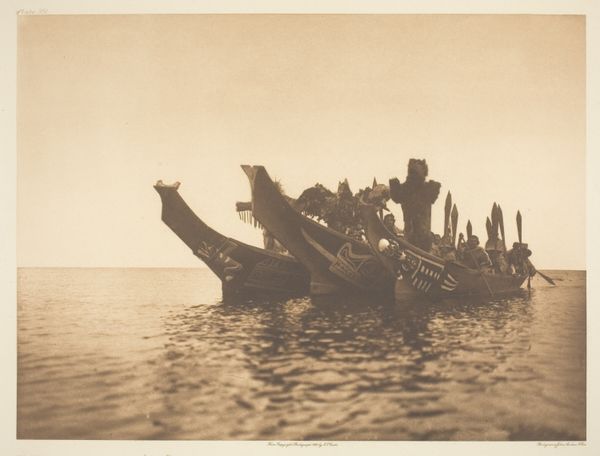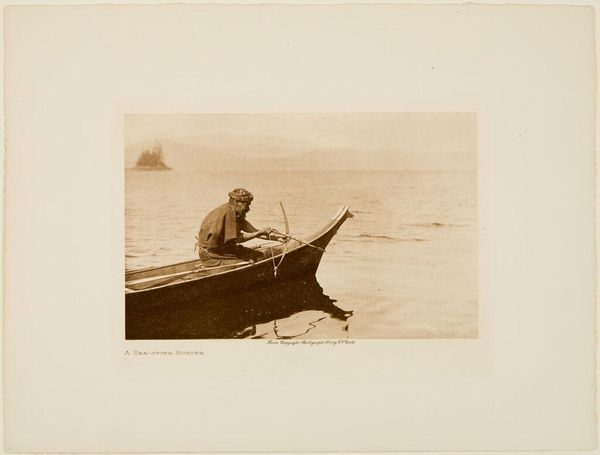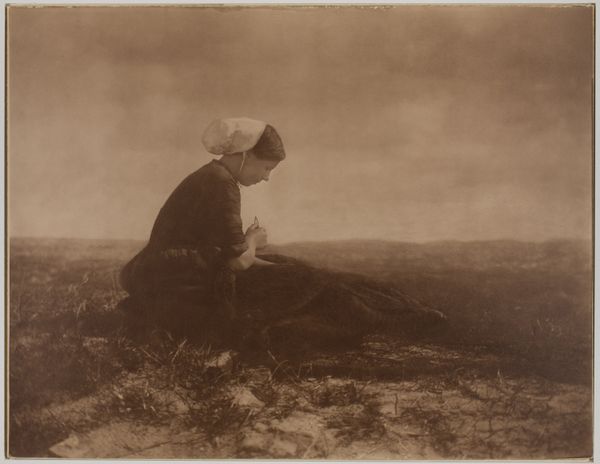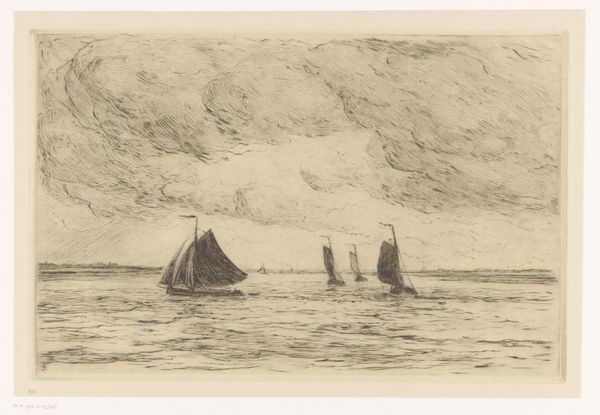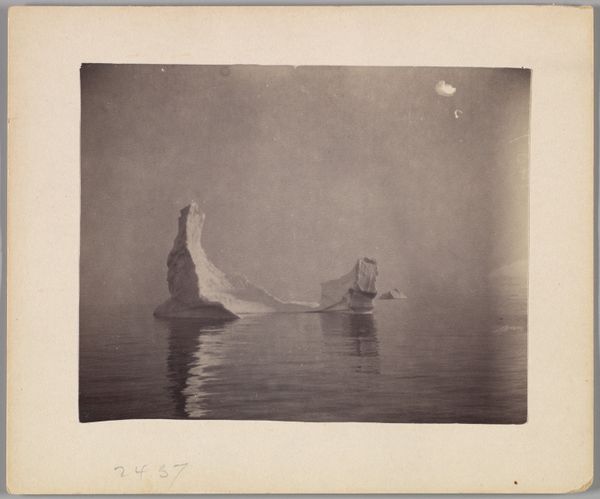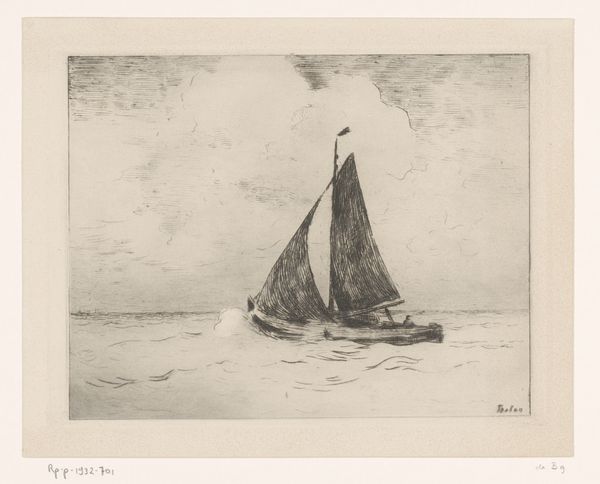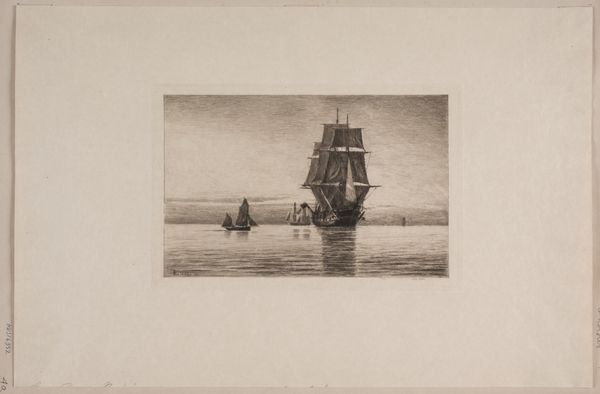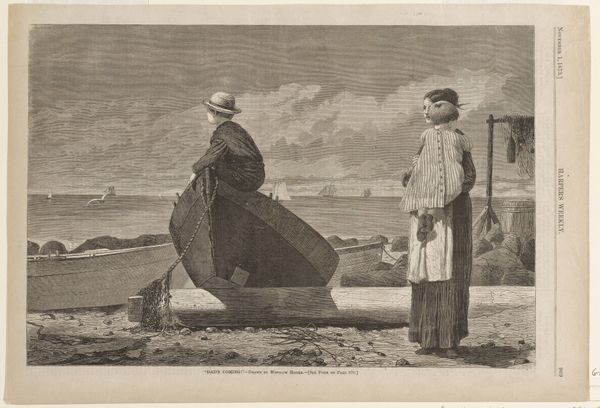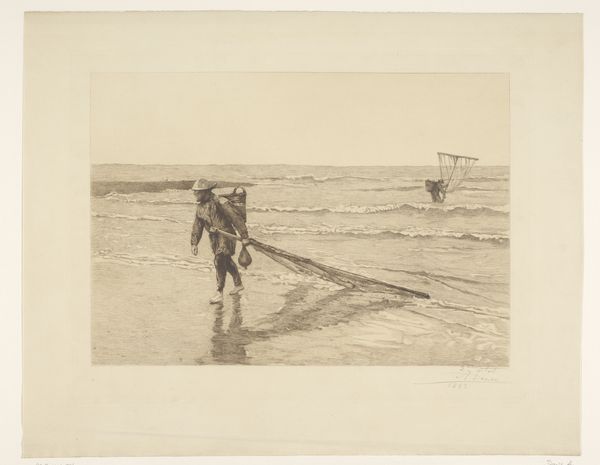
photography, gelatin-silver-print
#
portrait
#
photography
#
gelatin-silver-print
Dimensions: 27.2 × 38.8 cm (image); 32.2 × 41.9 cm (paper); 43.9 × 55.2 cm (mount)
Copyright: Public Domain
Curator: This photogravure by Edward S. Curtis, taken in 1910, is titled "On the Shore of the Lake - Kutenai" and now resides at the Art Institute of Chicago. It's quite striking. Editor: Striking indeed, yet a melancholic scene washes over me. The muted tones, the lone figure… everything whispers of solitude and quiet contemplation. Curator: Curtis sought to document what he saw as a disappearing way of life for Native American tribes. Notice how the woman’s stance and clothing are presented almost formally, suggesting a dignified representation. It invokes ideas about cultural memory and representation of Indigenous identity. Editor: I see that dignity, but I also wonder about the materials, the specific construction of the canoe. What sort of wood was used, the tools employed? And who built it? It tells us about access to resources, about skilled labor within the Kutenai community. Curator: The canoe beside her becomes a powerful symbol. Watercraft is such a central emblem for navigating life's journeys in many cultures. Here, it underscores a reliance on the lake. Editor: But a boat also speaks of transportation, of trade. Was this a typical family canoe, or something more elaborate? Were the materials sourced locally, or through complex trade networks? These practical details hint at a rich material culture, one we can read like a map. Curator: I agree. And consider Curtis's choices – the light, the composition. He presents a portrait imbued with both beauty and a sense of impending loss. It resonates even today, reminding us of displaced peoples and cultures struggling to preserve their heritage. Editor: Loss certainly permeates, but it is also balanced by this tangible object right in the foreground. It feels almost defiant, like it's demanding to be understood materially as more than a pretty picture. Its making carries forward legacy and resistance, challenging us to really *see* it. Curator: Precisely, it compels us to confront our assumptions and see this not merely as a portrait, but as a multifaceted story of culture and existence. Editor: A sobering photograph then, that urges to consider a broad array of visual codes and physical objects that shaped and influenced both subject and photograph itself.
Comments
No comments
Be the first to comment and join the conversation on the ultimate creative platform.

